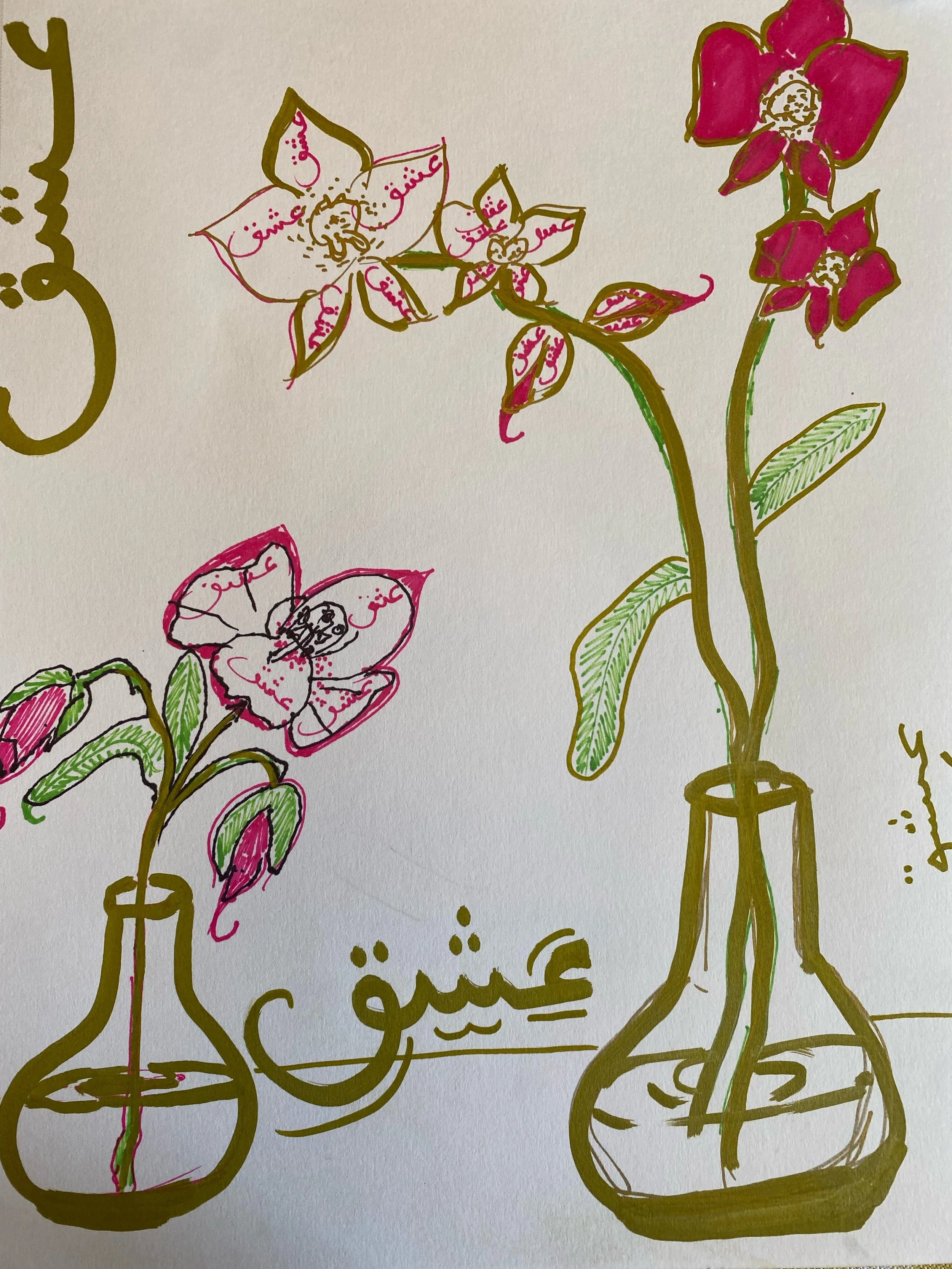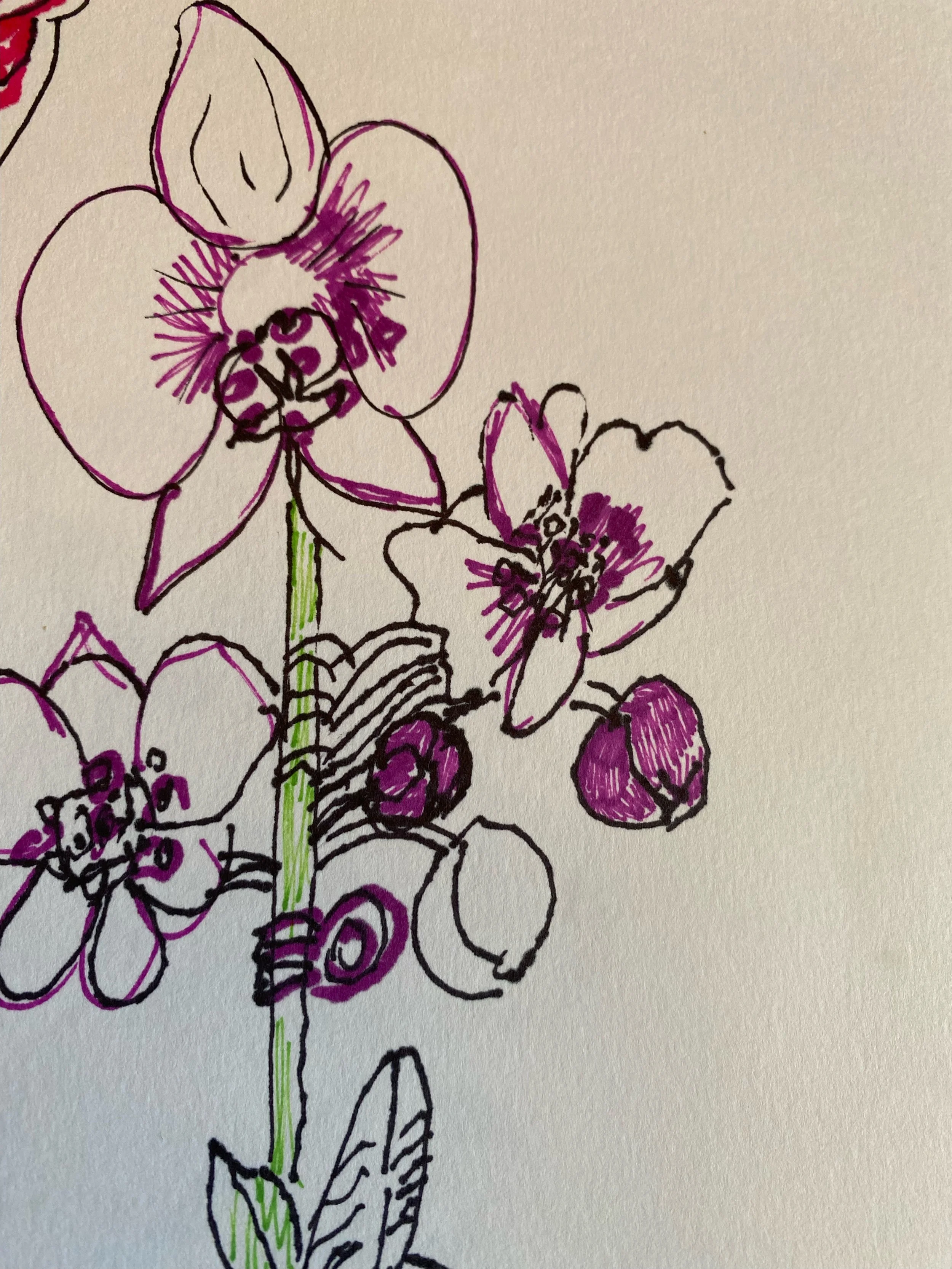The Practice of Shringara: Orchids and Baba
Orchids have always had a special place in my life. Growing up, I observed my aunt tend to her indoor plants with such care. Her orchids were always blossoming. When I visit her home, I delight in seeing who is revealing their blooms. In every home I have had, I always first designate the orchid space.
In my current home, I have created a rotating orchid viewing space on our dining room table. Particularly since the start of the pandemic, I have paid special attention to having these living objects of devotion all around me.
If you have been to Beloved Yoga, you’ve likely noticed the orchids that fill our window sills. All of them are gifts brought in by practitioners. Tended by Lisa, our resident plant guru, these orchids have become the official flower of Beloved Yoga.
Whether in my home or at the studio, these sentient pieces are my companions that I talk with, check in with, and tenderly touch, even kiss, every day. Recently, my dad and I have been lingering after dinner to amuse ourselves with these center pieces.
My father begins our musings with an observation. “Look, the fourth one has blossomed!”
“Isn’t it beautiful!” My response is meant to be heard by the newly bloomed orchid too.
“They all like to open up one after another,” he says, scanning the bunch with admiration.
“Maybe they each want to be seen as individuals, before they meet each other collectively?”
“Yes, they are so beautiful when they are together.”
Most evenings after dinner, my father and I spend time drawing. Orchids have been our recent subject. We each spend time gazing at each blossom, attempting to capture their beauty with black ink on white paper.
The rasa (emotion) of shringara (love/beauty) has had a significant role in my life. My father created a home for me growing up that was filled with beauty, from his art to weekly ikebana displays. I was taught to observe and to intentionally surround myself with beauty. He would say, “The world is full of suffering. Surround yourself with beauty to remember how beautiful the world is.”
The word rasa in Sanskrit means essence, flavor, or sentiment. It is often used to describe the feelings evoked and expressed in theater, dance, and art of India. Rasa theory is known as a theory of aesthetics. Abhinavagupta, a 10th century philosopher, built a philosophical foundation on the Rasa theory and proclaimed it as essential for cultivating a meaningful experience of life. He is known to have said that there is no poetry without rasas. He believed the rasa of shanta (peace) is where all other rasas have the potential to lead. These emotions capture and enrapture you to call forth the present self to arrive perfectly still, connected in a transcendent experience of the moment and the Self.
There are nine rasas and this month, shringara is highlighted as our bhavana (intention) at Beloved Yoga. Modern day thinker Peter Marchand speaks about shringara in his book, Rasa Sadhana:
“Love and beauty (shringara) only need a little attention to be enhanced. Increasing shringara is about small and simple things, a touch here, a flower there, a smile, a little neatness, attention, and harmony.”
Last month, the Washington Post published a thoughtful article, “How I found Joy in Life During Difficult Times” by Steven Petrow. Petrow calls forth the practice of shringara during times of despair. He shares a quote by novelist Barbara Kingsolver:
“In my own worst seasons I’ve come back from the colorless world of despair by forcing myself to look hard, for a long time, at a single glorious thing: a flame of red geranium outside my bedroom window. And then another . . . [a]nd another . . . [u]ntil I learned to be in love with my life again. Like a stroke victim retraining new parts of the brain to grasp lost skills, I have taught myself joy, over and over again.”
In my book, Care of the Whole Self: Yoga Inspired Tools to Befriend the Self, I invite practices of connection to nature as an essential path of connection to our sensual dimension. We tend to hear the word “sensual” and equate it with “sexual,” so we tuck away sensual living into the bedroom and dark spaces of secrecy. Sensual aliveness is deeply connected to our ability to experience beauty and to express love with beauty. Our sensory connection to nature is the most essential gateway.
From this experience, expression is only natural. The arts offer us an emotive entry into these felt sensual moments. It is very natural to have an experience and desire to share it with another. Artmaking is often a journey to take a moment, capture it, and then share it.
Perhaps in your home, create a viewing area to sit and linger, an area where you can be in touch with nature. Perhaps on your next walk, place your hands against your favorite tree and breathe with this sentient being.
I know you will find your own expression of shringara. Enjoy exploring and practicing. Let’s not forget how beautiful the world is.



